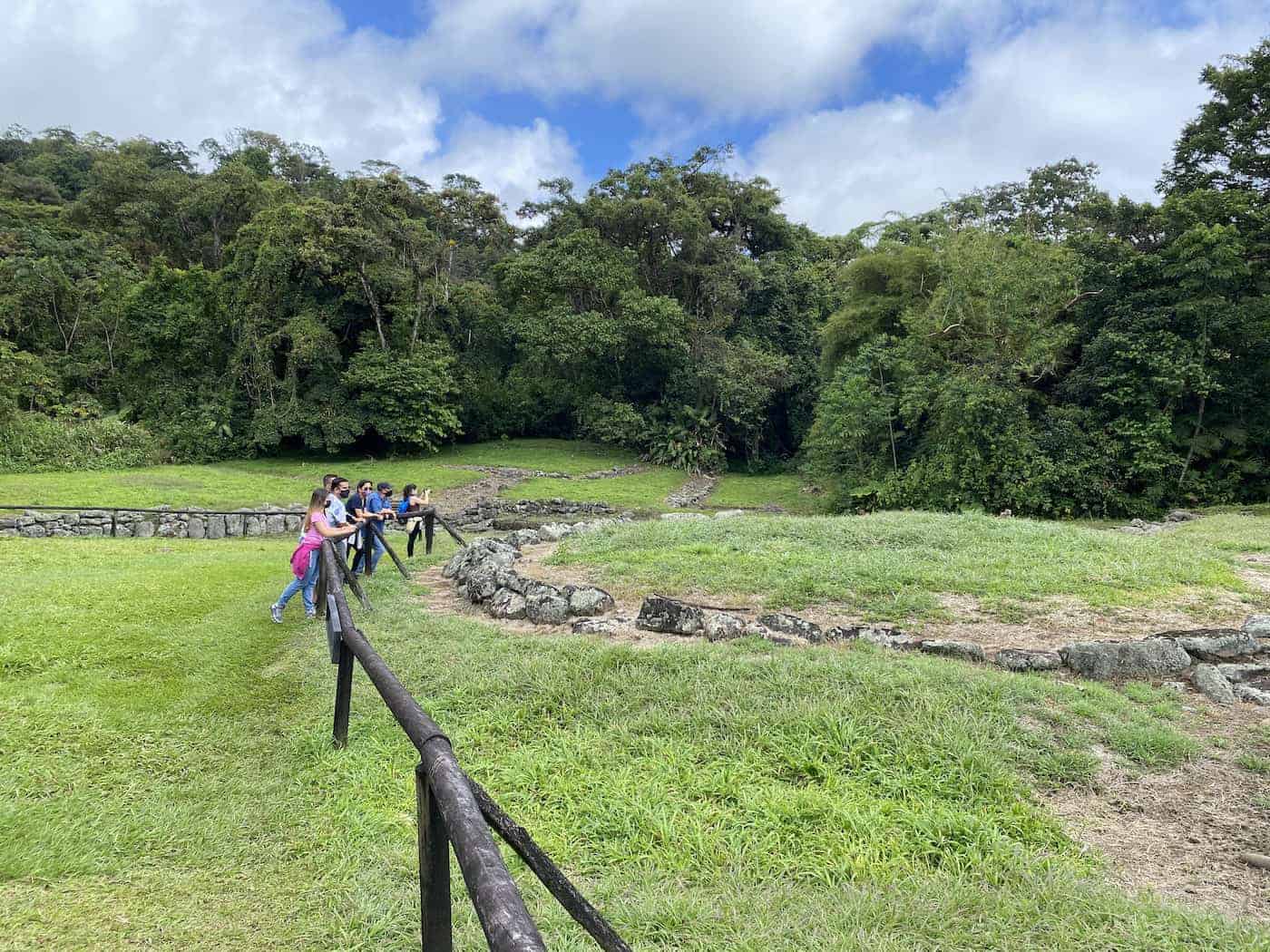Cut logs line gravel paths that lead visitors past ancient tomb sites made of rock slabs where various burial rituals were once performed. Archaeologists believe the burial process involved meticulous cleaning and well-constructed tombs for passage into the afterlife, according to GuayaboNational Monument park guide Rosita Fernández.
The site s main mound, measuring 32 meters wide, sits highest at the site s center with rock steps leading to the grassy center on both sides. Archaeologists believe this montículo served as a prayer site where the head chief went at sunrise to tell of the good things his people had done, and returned in the evening to reveal their bad deeds.
From afar, the circular green grass top glistens in the sun and carefully placed volcanic rocks on the mound s sloping side form the earliest staircases that have been seen in the country.
A restored stone roadway runs about 200 meters in length to the mound; archaeologists believe it served as a welcome mat to prayer as well as an inlet for outside communication.
Rectangular tanks and descending aqueducts reveal early knowledge of engineering, while staircases and roadways made with acute precision show early mathematics and architecture.
This motley of earthen treasures is found on just 20% of the monument s site.
If the site receives sufficient funds, archaeologists plan to further excavate the 16 hectares of overgrown jungle grounds.
Conservationist Mario Boza says there are at least 100 other sites, of equal importance but smaller size, scattered throughout the country.
Pre-Columbian inhabitants set up camp all across Costa Rica due to an abundance of water sources, which Boza says resulted in no single large-scale monument site like the grand ruins of Machu Pichu in Peru, where thousands lived and worked.
Guayabo National Monument is open to visitors from 8 a.m. to 3:30 p.m. daily. For information, call 559-1220.






